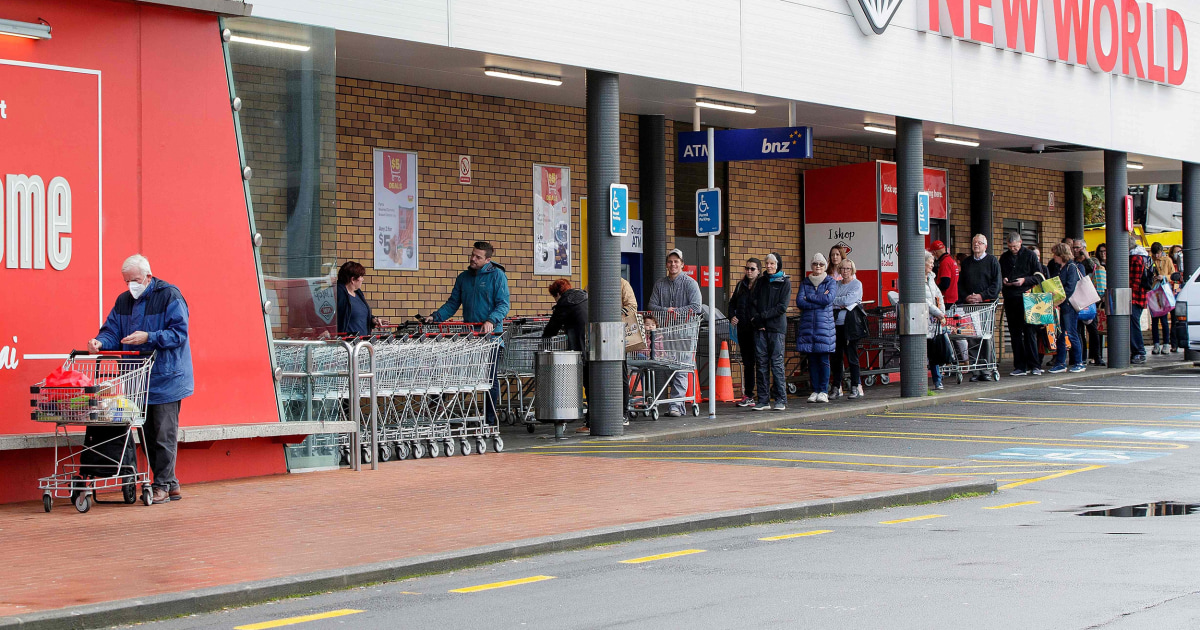true , da news says today, taxi? drivers are committing suicide rate higher than before... cellie...
Here you go Cellie, a documented report regarding COVID-related hardship in NYC...
Retail Chains Abandon Manhattan: ‘It’s Unsustainable’
Some national chains, both retail and restaurants, are closing outlets in New York City, which are struggling more than their branches elsewhere.
By Matthew Haag and Patrick McGeehan
For years, Bryant Park Grill & Cafe in Midtown Manhattan has been one of the country’s top-grossing restaurants, the star property in Ark Restaurants’ portfolio of 20 restaurants across the United States.
But what propelled it to the top has vanished.
The tourists are gone, the office towers surrounding it are largely empty and the restaurant’s 1,000-seat dining room is closed. Instead, dinner is cooked and served on its patio, and the scaled-down restaurant brings in about $12,000 a day — an 85 percent plunge in revenue, its chief executive said.
Five months into the pandemic, the drastic turn of events at businesses like Bryant Park Grill & Cafe that are part of national chains shows how the economic damage in New York has in many cases been far worse than elsewhere in the country.
In the heart of Manhattan, national chains including J.C. Penney, Kate Spade, Subway and Le Pain Quotidien have shuttered branches for good. Many other large brands, like Victoria’s Secret and the Gap, have kept their high-profile locations closed in Manhattan, while reopening in other states.
Michael Weinstein, the chief executive of Ark Restaurants, who owns Bryant Park Grill & Cafe and 19 other restaurants, said he will never open another restaurant in New York.
Of Ark Restaurants’ five Manhattan restaurants, only two have reopened, while its properties in Florida — where the virus is far worse — have expanded outdoor seating with tents and tables into their parking lots, serving almost as many guests as they had indoors.
“There’s no reason to do business in New York,” Mr. Weinstein said. “I can do the same volume in Florida in the same square feet as I would have in New York, with my expenses being much less. The idea was that branding and locations were important, but the expense of being in this city has overtaken the marketing group that says you have to be there.”
Even as the city has contained the virus and slowly reopens, there are ominous signs that some national brands are starting to abandon New York. The city is home to many flagship stores, chains and high-profile restaurants that tolerated astronomical rents and other costs because of New York’s global cachet and the reliable onslaught of tourists and commuters.
But New York today looks nothing like it did just a few months ago.
In Manhattan’s major retail corridors, from SoHo to Fifth Avenue to Madison Avenue, once packed sidewalks are now nearly empty. A fraction of the usual army of office workers goes into work every day, and many wealthy residents have left the city for second homes.
Many stores are still closed, some permanently, while those that are open have very little foot traffic.
For four months, the Victoria’s Secret flagship store at Herald Square in Manhattan has been closed and not paying its $937,000 monthly rent. “It will be years before retail has even a chance of returning to New York City in its pre-Covid form,” the retailer’s parent company recently told its landlord in a legal document.
“In the prime real estate areas, all the stores rely on having half international tourists and half local tourists or those from the local neighborhoods,” said Thiago Hueb, a founder of a jewelry company who had decided to close his flagship store on Madison Avenue before the pandemic struck because of high rents.
Now brokers are calling him trying to lure him back to the block, but Mr. Hueb, whose jewelry is sold in 80 department stores nationwide, is not interested.
“The avenue is no longer what it used to be,” he said.
J.C. Penney and Neiman Marcus, the anchor tenants at two of the largest malls in Manhattan, recently filed for bankruptcy and announced that they would shutter those locations.
The Neiman Marcus at Hudson Yards, the first in New York City, had only opened last year, with its name adorning the outside of the luxury mall — the centerpiece of the country’s largest private development.
Some popular chains, like Shake Shack and Chipotle, report that their stores in New York were performing worse than others elsewhere, investment analysts said. A few dozen Subway locations have closed in New York City in recent months. Le Pain Quotidien has permanently closed several of its 27 stores in the city and plans to leave others closed until more people return to the streets, said Andrew Stern, co-chief executive of the chain’s parent, Aurify Brands.
A Gap Store near Rockefeller Center has stayed closed and has not paid its $264,000 monthly rent. Two T.G.I. Friday’s in prime locations, one near Rockefeller Center and another in Times Square, have remained closed while its restaurants elsewhere in the country have reopened.
“Anyone in the food and dining business is really suffering right now,” said Vin McCann, a restaurant consultant with Heyer Performance in Lower Manhattan. “I think that’s true in all the boroughs.”
New York’s stringent lockdown and methodical reopening may have brought the virus to heel, Mr. McCann said, but it is also wreaking havoc on businesses with so few people going to work, virtually no visitors and many residents “a little loath to go out” and worried for their health.
“SL Green and landlords across the city have worked with retailers large and small to protect jobs and New York’s tax base during this crisis,” said Stephen Meister, a lawyer representing SL Green, which leases the Herald Square store to Victoria’s Secret.
But, he added, “Victoria’s Secret is a multibillion-dollar, publicly traded conglomerate exploiting the situation in an attempt to avoid paying its contractual rent obligations.’’
The store’s parent company, L Brands, did not respond to a request for comment.
A spokeswoman for Related, the developer of Hudson Yards, said the company remained bullish on the future of retail in New York City despite the closing of Neiman Marcus and the economic downturn.
“Retail at Hudson Yards was off to a strong start before this crisis hit, and we firmly believe that fashion and retail will always remain core to the vibrancy of New York,” the spokeswoman, Kathleen Corless, said.
New York’s shutdown dealt an especially painful blow to chains like Shake Shack that were born in the city and thrived as urban oases, said Nicole Miller Regan, who follows food chains for Piper Sandler in Minneapolis.
“That’s always been their core strength from a home-field advantage,” Ms. Regan said.
Shake Shack reported on July 30 that it had experienced a 40 percent decline in revenue in the second quarter and that its stores in big cities like New York “were most impacted by the Covid-19 outbreak.”
They eventually reopened to serve takeout and deliveries, but they did not rebound as well as the company’s suburban locations that have drive-up windows where customers can avoid all but the briefest interaction, Ms. Regan said.
“The drive-through is the channel that consumers feel most comfortable with,” she said.
Like Shake Shack, Chipotle told investors that its stores in the Northeast, including New York, were underperforming the rest of the chain, said Nick Setyan, an analyst with Wedbush Securities in Los Angeles.
The main reason. Mr. Setyan said, is that “people just aren’t going to work” in much of Manhattan.
For Veggie Grill, a California-based chain of 35 restaurants, New York is “the most difficult market for us to operate in right now,” said Jay Gentile, the company’s chief operating officer.
After three years of planning, Veggie Grill, which serves plant-based sandwiches and salads, opened its first New York restaurant in the Flatiron district in December.
Now it’s struggling to keep the place open with a pared-down staff, and sales that have fallen about 80 percent from before the pandemic, Mr. Gentile said.
“In New York City, there is next to no lunch business,” he said. “No one’s coming in from Connecticut. No one’s coming in from New Jersey.”
And, there are no tourists wandering the streets, he added.
The story is different at some of the company’s restaurants on the West Coast, which are now doing as much business lately as they did a year ago, he said.
The shutdown and phased reopening of the city presented challenges that derailed Veggie Grill’s expansion plans.
Three months after opening, Mr. Gentile had to lay off all 70 of its New York employees, including a general manager who was supposed to oversee the addition of three locations in the city. In May, the company hired back about 24 of the workers with expectations that business would pick up as the city reopened.
Now, the staff is down to 16 employees, only two of whom work full-time.
“We have two hours at lunch and 2½ hours at dinner to make our money,” he said. “We’re still paying very high rent. It’s unsustainable.”
Despite all the hardships, Mr. Gentile said he’s determined to keep the doors open. “If we close New York down,’’ he said, “then we would have to close it for good.’’









